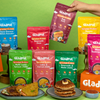How you think about food impacts your kids' relationships with them as well. These negative thoughts and behaviours can affect your child and might cause an eating disorder in the long run. So what can you do?
Stop labelling foods as good or bad: We've all heard it a lot. But it's so crucial. A healthy relationship with food can only be developed when it's not restrictive. Sometimes parents forbid certain foods, which only fueled my cravings and led to binge eating. Instead, to help them learn to balance, it's important to use language like "always vs. sometimes." Fruits and vegetables are always food, while noodles and ice cream could be food sometimes.
Involve them in the process: We are not asking you to let them use sharp knives or let them be in front of the fire. There's more to food than just the eating part. Kids tend to naturally grow curious about various foods when they're involved in meal planning, shopping, and preparing food. This will only help them learn about food and its nutritional value.
Build early food habits: Habits like drinking a glass of water the first thing in the morning and eating a handful of nuts and seeds to start the day. Maybe breakfast should be full of colours and include veggies, fruits, protein, and crabs. These healthy habits could be a family tradition and will be a part of their routine for a long time.
Let go of the "clean your plate!" idea: We might think this helps our kids get all the nutrients, but this can lead to them disliking the food and associating negative feelings towards mealtime. If you can’t get your child to eat their vegetables, try to have them see you eating and enjoying them yourself. Your little one learns about food choices from you, so try to encourage them as much as you can.
Help them learn portion control: It's so crucial to help them understand their hunger pangs and food urges. They need to know how much food they need to feel full before they indulge in overeating. Visuals are the most accessible to them; a closed fist is an ideal portion for pasta or rice. A meat portion should be about as big as their palm. The amount of fat, such as butter, should be limited to the size of the top of their thumb.

 Shop All
Shop All
 Hazelnut Almond Spread
Hazelnut Almond Spread
 NutraMilk Mix
NutraMilk Mix
 Healthy Breakfast
Healthy Breakfast
 Combos
Combos
